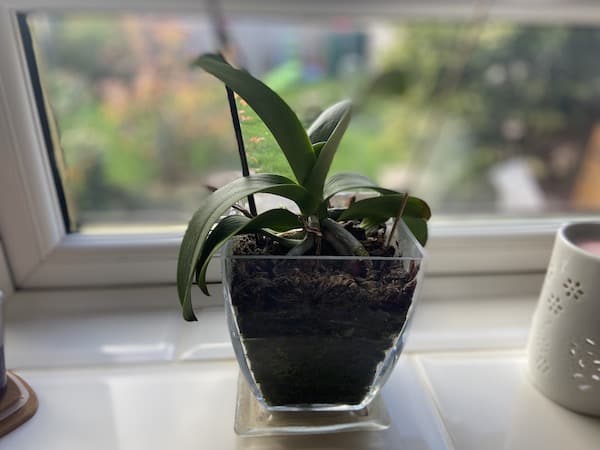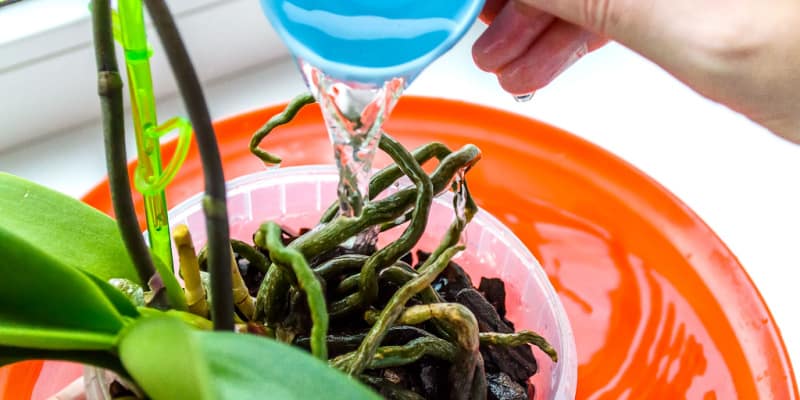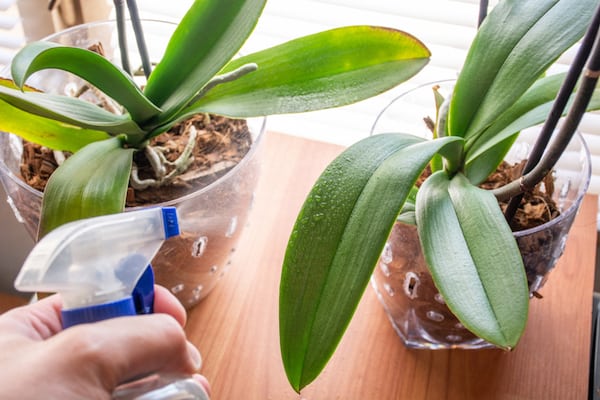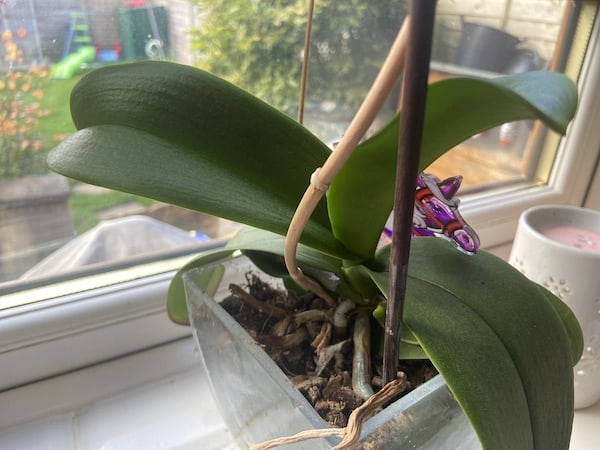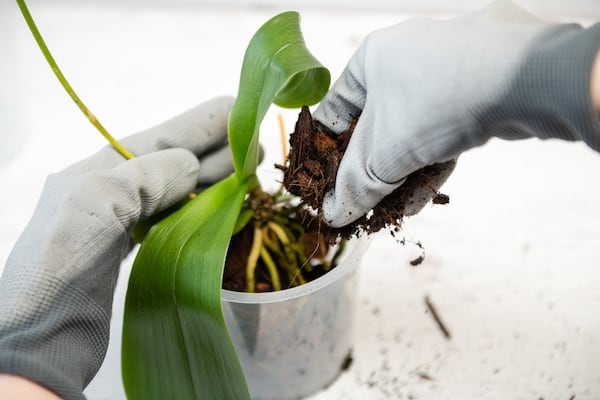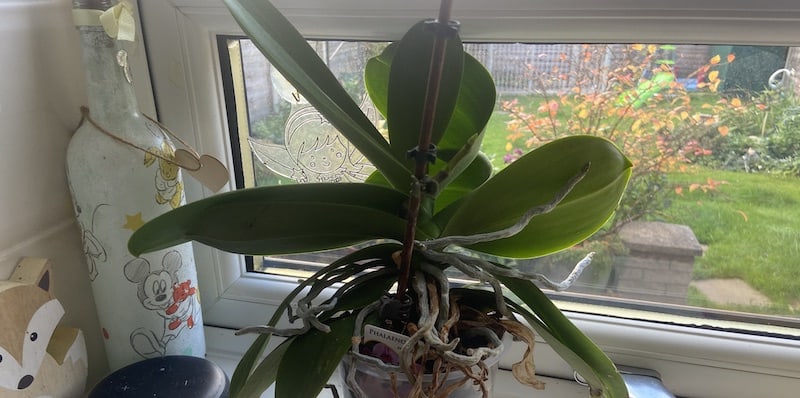
Why is my orchid not blooming?
Our site is reader supported, this means we may earn a small commission from Amazon and other affiliates when you buy through links on our site.
Your orchid not blooming may be the result of a number of issues. These could be environmental (such as temperature), your standard of care (watering for example) or because of the type of orchid itself (its individual life cycle, perhaps). I cover the major elements to look at when your orchid is not producing blooms.
Bloomed once and is not blooming again
If your orchid is not reblooming and you expect it to, first of all check the variety of orchid that you have. While Phalaenopsis orchids may bloom twice which is why I personally love them, Dendrobium orchid blooms last a longer time, and then the plant goes into a growth and rest period. Know which type of orchid you have and what to expect.
You need to encourage your orchid to rebloom. The two key tasks to this are to cut the orchid stem back and to lower the temperature in the surrounding environment. My article What to do with orchids after blooming covers the steps of how to get your orchid to the reblooming stage.
Not enough light causes orchids not to bloom
The most common problem with an orchid plant not blooming is the lack of light. And not just any light – the correct type and amount of light. Orchids need between six and twelve hours of indirect sunlight per day. Avoid placing them in direct sunlight as this burns the leaves and stems, harming the plant and its future growth.
You can tell whether an orchid is receiving enough light in several ways but especially by looking at the colour of its leaves. But be aware that this is different to ordinary houseplants where the lusher and darker green the leaves are, the better. With orchids, you’re looking for the leaves to be a light or medium green with yellowish tones. This indicates that the plant is receiving enough light.
Of course, in winter you have to provide artificial light to reach the number of sunlight hours needed. My guide, How much light do orchids need? explains in detail how to provide the correct light for your orchid plant.
Watering
Along with the wrong amount of light, watering problems cause the most difficulties in successfully growing orchids. Here are several ways that watering processes can stop orchids from blooming.
Overwatering orchids
If anything at all goes wrong with your orchid, check first that you’re not overwatering it. And that you’re not letting the roots sit in a puddle of water in the pot. Overwatering the orchid causes the roots to become waterlogged and not able to take in oxygen. This prevents the roots from circulating water and nutrients up to the plant.
In addition, the roots become black or brown and develop root rot. This is a fungal disease that can often kill your orchid. (See Preventing and treating root rot for more details.)
For information on how to water your plant correctly, see When and how to water your orchid.
Underwatering and low humidity
It’s as harmful to not give your orchid enough water as it is to overwater it. Under-watering the plant doesn’t give the roots enough water to send up to the plant, resulting in no new growth or new blooms. Underwatered roots are brown and look shrivelled. Once again, When and how to water your orchid helps you establish the best watering schedule for your orchid plant.
Orchids are rainforest plants and like to be in humidity of 40% or more. Chances are that your home isn’t this humid, especially in the winter, with the central heating on. You can frequently mist the orchid with water to keep it humid. But an easier way is to put the pot on a tray of pebbles which have water over them. Just don’t let the water touch the drainage holes at the bottom of the pot as the potting mix will draw the water up, playing havoc with your watering schedule.
Night-time temperature is too warm
Although orchids need a tropical environment in which to thrive (warm and moist), they also need one that has a significant difference in temperature between daytime and nighttime. Ensure that the night temperature is about 5°C cooler than the day one. This gives the orchid a rest period.
Also, don’t place the orchid in any breeze or windy position. They prefer constant temperatures in the range they prefer: 18°C – 29°C in the day and 16°C – 18°C at night.
Lack of fertiliser
Fertilising orchids is a difficult task to balance. But the key is to use a fertiliser specially developed for this plant. Regular houseplant fertilisers are usually too strong. Choose one that’s developed to feed orchids and apply it sparingly. Orchid experts recommend feeding your orchid every three or four waterings. Fertilising them every watering lets the minerals in the fertiliser build up. You may notice salt crystals on the top of the potting mix if this happens. This causes burns to the plants.
On the other hand, not fertilising enough doesn’t give the plant enough nutrients to produce the new blooms that you’re looking for.
Wrong potting medium
You can’t pot orchids in a regular potting compost. Orchids are plants that grow in the air, and soil or compost potting medium is just too heavy and compact for them. I devote a whole article to what to use as the orchid potting mix – see Do orchids need special soil?
If you use regular potting compost, the roots are trapped in the heavy soil and can’t breathe or expand to send nutrients and water up to the rest of the plant. The plant eventually withers and dies without producing new growth and blooms.
But in summary, you need to use substances such as bark, moss, clay and other organic or inorganic materials. Or you can buy a potting mix formulated especially for orchids.
It’s the wrong season
Orchids have a specific time that they bloom, a time that they grow and a period of rest. Maybe your orchids isn’t blooming as it’s not the right season for it. Don’t be fooled when you bring home a plant in bloom from the garden centre or nursery. The orchid may have been forced into blooming at that time to be sold.
Most orchids grow in the summer and bloom in the fall, winter or spring. If this is the first season with your orchid and it’s not blooming, just take good care of it (see How to grow and care for orchids) and let it find its own growing and blooming rhythm. And do some research into the natural life cycle of your particular orchid to understand when to really expect it to bloom.
And remember that all orchids need a dormant rest period to recover and regroup before the next blooming period.
